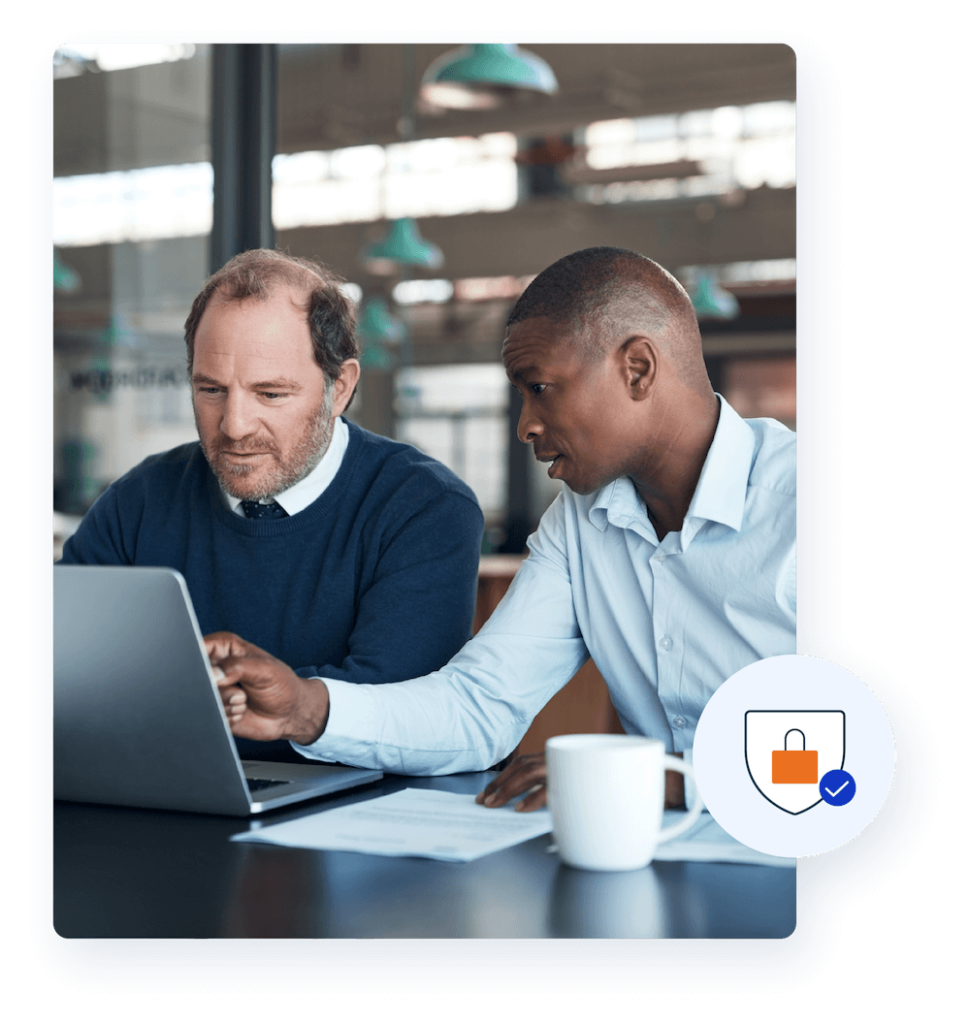Blog
5 proactive steps to improve the security of your home-based care data

Home-based care agencies face significant challenges in securing sensitive information, especially because of the sheer rise in cyber-attacks and data breaches. Over the last decade, these attacks have increased by 83% in the health care industry, with 2023 witnessing nearly 400,000 health care records breached daily. Health data is a valuable target for hackers, so protecting this data is critical for all health care providers. As a result, the home-based care industry needs to seek more effective ways to safeguard its data continually.
Due to the on-the-go nature of home-based care, caregivers and staff frequently use smartphones, tablets, and laptops to record and transmit client data remotely. These networked devices that caregivers rely on to perform their jobs can be vulnerable to attack, particularly if misused. For example, phishing emails account for over 90% of all cyber-attacks, according to Home Health Care News.
Data breaches can harm a home-based organization’s reputation among its clients and may lead to non-compliance violations with HIPAA/PIPEDA regulations. To prevent such incidents, using a secure software platform to manage client information and daily tasks and continuously improve data protection practices is crucial. Doing so can enhance your organization’s positive reputation, build trust with your clients, and provide exceptional care.
To help improve your data protection strategy, we’ve compiled 5 proactive steps your organization can take to increase data protection in your home-based care platform.
5 proactive steps to continuously improve the protection and security of home-based care data

1. Access control and multi-factor authentication to restrict access to authorized users only
Since most home-based care staff work remotely within their clients’ homes, using access control mechanisms like user or role-based permissions and access limits and strong authentication methods like multi-factor authentication (MFA) are highly effective ways for your organization to increase data protection within your software.
Access control mechanisms
Many software systems for home-based care, such as AlayaCare Cloud, come with access control mechanisms that allow you to limit access to sensitive data based on roles and permissions assigned to each user. These access control mechanisms are designed to protect your organization’s data and assets by reducing the access and impact of unauthorized breaches.
Multi-factor authentication (MFA)
Multi-factor authentication (MFA) is essential for protecting client data, employee information, and PHI from identity theft and stopping unauthorized access if a user’s credentials or device are compromised.
MFA is a security method requiring users to provide multiple verification forms to access an account or system. This typically includes a combination of something the user knows (like a password), something they have (like a smartphone or security token), or something they are (like a fingerprint or facial recognition). By requiring multiple means of authentication, MFA adds an extra layer of protection against unauthorized access.
The many benefits of MFA include:
- It meets regulatory compliance standards such as HIPAA and PIPEDA.
- MFA integrates with SSO, enabling users to confirm their identity with a secondary method, reducing data loss risk and saving time.
- Unauthorized access to sensitive data, even if one credential is compromised.
- MFA can also be set up such that any unauthorized attempt at the first or any form can trigger a warning to the system administrator for immediate attention.
A software system with access control mechanisms and multi-factor authentication allows for extra data protection and gives you peace of mind to focus on what matters – providing your clients with exceptional care.
2. Periodic security audits and assessments to identify vulnerabilities and areas for improvement
Audits and assessments are crucial for businesses to identify potential security weaknesses and maintain robust data and platform security.
Regular security audits
Regular security audits help businesses identify vulnerabilities, ensure compliance, and maintain a strong, breach-proof platform, which results in a protected reputation, seamless and disruption-free operations, and money saved. Infrastructure audits can also help uncover the need for software upgrades. Since cyber-attacks are becoming more sophisticated, 30% of companies plan to improve their security and risk management by conducting various audits and compliance assessments.
For example, AlayaCare conducts three regular security audits: Independent SOC 1 (Type 2), SOC 2 + HITRUST CSF, and HIPAA annual audits. This enables the AlayaCare platform to comply with HIPAA and HITECH in the US and PIPEDA and provincial statutes in Canada. Learn more.
Security risk assessments
In addition to performing your own risk assessments, it is recommended to use a platform solution that regularly performs their own evaluations and assessments and shares their results with your organization. These assessments specifically focus on preventing application security defects and vulnerabilities. It ensures standards related to privacy, cybersecurity, experience, and capacity to deliver services are met – in addition to safeguarding client safety and quality of care.
For example, AlayaCare performs regular assessments, such as Privacy Impact Assessments (PIAs) and Threat and Risk Assessments (TRAs), to identify any vulnerabilities and areas for improvement in the AlayaCare software platform’s security posture. Through these regular assessments, AlayaCare can promptly address system weaknesses to mitigate risks. Learn more.
3. Regularly updated software with the latest security updates and patches
It’s crucial to regularly update your software systems with the latest security patches and updates provided by the software vendor. Regular updates go a long way in addressing known vulnerabilities and strengthening your system against potential security threats.
Fortunately, many software options push out automatic updates. We highly recommend taking advantage of these automatic options, as they save you the hassle of manual checks and keep you updated with any newer threats and risk mitigations.
When applying automatic updates, it’s essential to do so from trusted network locations, such as your home or workplace. It’s best to avoid updating software while connected to untrusted networks like airports, hotels, or coffee shops.
Rest assured that following these best practices can keep your software system up-to-date and secure.
Guide: Evaluate the security and performance of your home-based care software

4. HIPAA-approved secure messaging channels for all communication, especially for transmitting client data
Ensure that all communication channels used within your home-based care organization, especially for transmitting sensitive data and PHI, such as telemedicine platforms or messaging systems, are secure and encrypted to prevent interception or eavesdropping.
It is vital to have an encrypted communication platform that meets health information privacy laws, such as HIPAA and PIPEDA, to keep patient health information (PHI) safe in internal communications between caregivers, patients, the circle of care, and other staff.
HIPAA compliance and security are critical for employee messaging. A data breach or security incident that results from any violation could see separate fines issued for different aspects of the breach under multiple security and privacy standards. A fine of $50,000 can be issued for any violation of HIPAA rules, however minor. Learn more.
One other thing to consider for your communication channels is data residency. Data residency laws exist primarily to regulate data storage, processing, and transfer within a specific jurisdiction, often aiming to protect individuals’ privacy, ensure data security, and maintain control over sensitive information. These laws may require organizations to store certain types of data locally or within specific geographic boundaries, imposing restrictions on the cross-border transfer of data to ensure compliance with local regulations and protect national interests, such as national security or economic stability. To be rest assured that your home-based care agency’s messaging tool complies with data residency laws, always pick a secure and compliant messaging product.
For example, the AlayaCare Secure Messaging feature allows for PHI data residency capability. PHI and messages sent through the tool can be stored for a set time frame, allowing agencies access and control their information. Learn more.
5. Frequent training sessions to educate employees about best practices for data protection and security protocol
Conducting regular training sessions to educate employees about best practices for data protection, security protocols, and the risks associated with handling sensitive data can have a major impact. It enables employees to identify and respond to security threats such as phishing attacks.
70% of data breaches (generally for all US industries) involved a human element. For instance, in 2023, only 1 in 9 businesses (11%) provided a cybersecurity awareness program to non-cyber employees in 2020, and 20% of organizations faced a security breach because of a remote worker.
Although these statistics represent all industries in the United States, the home-based care industry is not exempt from data breaches. It is crucial to educate and train all employees in your organization regularly on the best data protection and security protocols, primarily since most staff work remotely in clients’ homes and use mobile devices, laptops, or tablets to record information for their client visits.
With frequent security training, your organization can ensure continuous use of the best practices for data protection and security protocols. This can prevent situations like an untrained employee falling for a phishing scam, which can cause a potential security breach.

Security & privacy at AlayaCare
Data security and privacy are core values at AlayaCare. We build them into our organization, processes, and home care software platform. AlayaCare provides top-notch security and performance standards, allowing you to grow your business and confidently provide quality client care.
- Security and privacy standards for care agencies worldwide
- Uptime and continuity you can rely on
- Prioritizing protection for your data
- Enhancing privacy with consent directives


